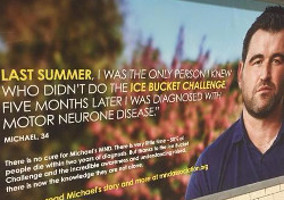Guy Parker, chief executive of the Advertising Standards Authority, tells charities how they can avoid falling foul of the regulator, but still be noticed.
Fundraising ads by charities account for some of the most striking and important that we see and hear. That poster image that stopped me in my tracks. Those newspaper ads that challenged my preconceptions. That cleverly targeted piece of direct marketing.
Charities have a vital role to play raising awareness of and campaigning for their causes, not to mention providing services, support and training, often to very vulnerable groups. And fundraising ads that encourage us to donate are a big part of what pays for that important work. Most charities do a great job making sure the content of their fundraising ads is responsible, but there are a few ads that have caused us concern through causing harm or offence or misleading people.
The Advertising Standards Authority is the UK’s independent advertising regulator, making sure ads are responsible. We apply the Advertising Codes, written by the Committees of Advertising Practice (CAP). We regulate ads across all media. TV, radio, print, posters, online display, leaflets/brochures and direct marketing – we’ve got it covered. But we also regulate charities’ advertising claims on their own websites and social media spaces like Twitter and Facebook.
With advertising budgets that can be relatively meagre, we know how important it is for charity ads to be noticed. But we also know the pitfalls that charity advertisers can fall into by getting it wrong. Earlier this year, we banned a Crimestoppers poster that stated "BREAK YOUR SILENCE: Don't let drugs and violence rip the heart out of your community" and that featured an image of bloodied hands holding an apparently human heart. We thought that some people, particularly children, would find the bloody image upsetting because of its graphic nature. Because the public give charity advertisers a little more leeway to use potentially upsetting images, we do too. But this example shows that charities don’t have carte blanche. The worthiness of your cause will count a little in your favour, but it’s not a get-out-of-jail-free card.
Charities must be clear about the use to which donations are put. We banned a VSO TV ad that implied that all VSO volunteers worked in health care, which wasn’t the case, and that donations from the appeal would be directed specifically to helping unwell babies in West Africa. It’s important that potential donors aren’t misled about where their money is going. And remember, the fact you don’t intend to mislead is no defence: what matters is what the audience is likely to understand.
We have strict rules on advertising to children. Fundraising charity ads featuring children, or that are likely to be seen by or appeal particularly to children, mustn’t contain anything likely to result in their physical, mental or moral harm. Particular care must be taken to ensure charity ads don’t exploit children’s susceptibility to charitable appeals. And ads mustn’t encourage children to buy products that promote charitable purposes or exhort them to persuade an adult to buy them on their behalf.
We want to see charities continue to produce responsible ads, as the vast majority already do. That’s why CAP has produced a simple guide to help charities.
There’s information on striking the right balance between highlighting the importance of your cause and being sensitive to those who might be particularly affected by your message. The Cancer Research UK ruling to which the guidance links is a good example of a circular the content of which fell just the wrong side of the line. And there’s guidance on being upfront about costs and commitments, running charity linked promotions and not implying you’re a charity if you aren’t.
So if you’re unsure of the advertising rules or simply want a refresher, CAP can help you get your ads right. Click here.
Guy Parker is also a member of the Fundraising Regulator Standards Committee
Related articles











